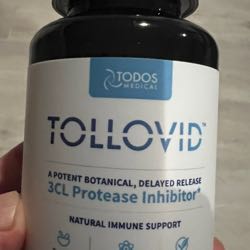Posted On: 09/11/2014 4:14:35 PM
Post# of 30081

Amarantus Bioscience Holdings, Inc. (OTCQB:AMBS), a biotechnology company focused on the development of diagnostic and therapeutic interventions for Alzheimer's disease, Parkinson's disease and orphan ophthalmological disorders, today announced positive 15-day non-GLP toxicology data for a single intravitreal administration of MANF in an ocular safety animal model, relevant to MANF's development in ocular diseases, including orphan indications such as Retinitis Pigmentosa. The intravitreal method of administration was chosen because it is the delivery method expected for human application of MANF. The experiments were conducted at a leading ophthalmology contract research laboratory in France.
"We are pleased to see continued progress in our orphan program for MANF in ophthalmological diseases," said Gerald E. Commissiong, President & CEO of Amarantus. "The results seen in this ocular tolerance study are encouraging for an initial clinical focus on MANF in orphan ocular diseases. This data will support the preparation of our orphan drug designation application with the FDA for MANF in one or more ocular disorders in the fourth quarter, including Retinitis Pigmentosa."
The aim of this study was to evaluate the ocular tolerance of MANF after a single intravitreal administration in pigmented rabbits over a 15 day period at dosing levels expected to be above therapeutically relevant dosing levels in human. Ten female pigmented rabbits were divided in two groups of five animals each, corresponding to treatment with MANF and treatment with vehicle (control). MANF and the vehicle were dosed by intravitreal injection in the right eye once, on Day 1. Slit-lamp examinations on four days during the 15-day follow-up period were complemented with a histopathology evaluation of the treated eyes on day 15. There were no treatment or administration-related effects on body weight, clinical observations or ophthalmic examinations. No pathological findings related to treatment were found in any of the eyes observed during histopathology evaluation. The report from the study concluded that a single intravitreal administration of MANF in pigmented rabbits was macroscopically and microscopically very well tolerated.
"We are pleased to see continued progress in our orphan program for MANF in ophthalmological diseases," said Gerald E. Commissiong, President & CEO of Amarantus. "The results seen in this ocular tolerance study are encouraging for an initial clinical focus on MANF in orphan ocular diseases. This data will support the preparation of our orphan drug designation application with the FDA for MANF in one or more ocular disorders in the fourth quarter, including Retinitis Pigmentosa."
The aim of this study was to evaluate the ocular tolerance of MANF after a single intravitreal administration in pigmented rabbits over a 15 day period at dosing levels expected to be above therapeutically relevant dosing levels in human. Ten female pigmented rabbits were divided in two groups of five animals each, corresponding to treatment with MANF and treatment with vehicle (control). MANF and the vehicle were dosed by intravitreal injection in the right eye once, on Day 1. Slit-lamp examinations on four days during the 15-day follow-up period were complemented with a histopathology evaluation of the treated eyes on day 15. There were no treatment or administration-related effects on body weight, clinical observations or ophthalmic examinations. No pathological findings related to treatment were found in any of the eyes observed during histopathology evaluation. The report from the study concluded that a single intravitreal administration of MANF in pigmented rabbits was macroscopically and microscopically very well tolerated.
